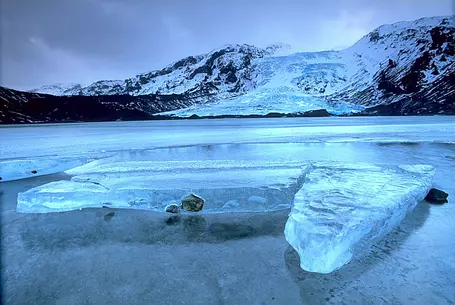Climate Detectives: Module Overview
The lab activity was developed by Jeff Lockwood of TERC and Alison Mote of the Ann Richards School for Young Women Leaders for the EarthLabs project.
The Workshop Leader Resources were developed by Nick Haddad of TERC, Project Director of the EarthLabs project.
Why teach about past climate?

Understanding the influence of humans on the climate system.
The paleoclimatic record also allows us to examine the causes of past climate change. Looking into Earth's climate history can help scientists determine how much of the 20th century warming may be explained by natural causes, such as solar variability, and how much may be explained by human influences.
Improving the ability of climate models to simulate future climate change.
Most state of the art climate prediction is accomplished using large sophisticated computer models of the climate system. A great deal of research has been focused on ensuring that these models can simulate most aspects of the modern, present-day, climate. It is also important to know how these same models simulate climate change. This can be accomplished by comparing simulations of past climate change with observations from paleoclimatic records. So in a real sense, paleoclimatology helps us improve the ability of computer models predict what future changes in climate we might expect.
Why use this set of lessons?
The ultimate question for students regarding events that have occurred throughout the Earth's history is "How do we know?" Students will discover how we know what we know about the Earth's past climate through a series of learning activities in which they will work collaboratively, mimicking scientific research groups on the JOIDES Resolution. Using data collected from Expedition 341, students will explore how climatic changes are recorded in the rock record, learn about careers associated with the IODP, and gain an appreciation for the ocean drilling process, and data collection methods. Ultimately, students will assume the role of scientists on board the JOIDES Resolution as they support their ideas with evidence.
In this unit, students analyze sediment cores and search for clues about Earth's past climate history. Every effort has been made to have students experience what it's like to join a scientific expedition and work collaboratively to do an investigation that focuses on uncovering clues to past climate change. They travel along with a group of scientists who extracted sediment cores from several locations along the south coast of Alaska in the summer of 2013. Students conduct hands-on lab activities, watch videos, analyze the actual data from the expedition, consult maps and graphs, explore online interactives, all of which will help them gather evidence to determine when major climate events occurred in the past, and how these events connect with changes in climate today, and in the future.
Key Questions addressed by this module include:
- What are some of the specific types of evidence that scientists gather as they examine marine sediment cores?
- What Earth processes combine to produce sequences of sediments on the ocean floor?
- Why is it important to understand climate history?
- How does the advance and retreat of glaciers affect rates of deposition and other Earth processes?
- What are climate cycles and what causes them?
- What is proxy data and how is it used to reveal past climate history?
Before starting this module
- Read the Lab Overviews section, which identifies all of the materials you'll need to gather and provides a quick scope and sequence of the unit.
- If you have not already done so, please read the Climate Series Introduction.
Assessments
Several options for assessing student understanding are provided throughout this module. Stop and Think questions can be used to assess student understanding at key points within each lab. These questions are available on the Instructor Page for each lab, under the Printable Materials heading. Short written tests to assess student understanding of material covered by each lab can be found on the corresponding Instructor Pages, under the Assessment heading. A full list of lab-level assessments as well as a cumulative end-of-module test can also be found on the Assessments page.
Resources
The resources below provide important background information relevant to this module and to the entire set of Climate EarthLabs modules.
- Earth System: The Basics (Acrobat (PDF) 134kB Jun23 22)
- Realities VS Misconceptions About the Science of Climate Change (Acrobat (PDF) 429kB Jun6 12) This document was made available by the Center for Climate and Energy Solutions (https://www.c2es.org/)
- For the Climate Detectives module, the International Ocean Drilling Project has a wealth of additional information about the voyages of the JOIDES Resolution, ranging from maps, interviews with scientists, video clips, to an image gallery.
Workshop Leader Resources
Below are links to a set of resources which you may use if you wish to lead a one-day workshop that introduces this unit to other teachers. The resources are suggestions, and you are free to modify them and use them as you wish.
- 1. Leader's Introduction to the Climate Detectives Workshop (Microsoft Word 2007 (.docx) 149kB Aug31 16)
- 2. Climate Detectives Workshop Outline and Notes (Microsoft Word 2007 (.docx) 102kB Aug31 16)
- 3. PowerPoint Slides for the Climate Detectives Workshop (PowerPoint 2007 (.pptx) 2.4MB Aug31 16)
- 4. Climate Detectives Workshop Time Schedule (Excel 2007 (.xlsx) 30kB Aug31 16)
- 5. Climate Detectives Challenge Handout (Microsoft Word 2007 (.docx) 135kB Aug31 16)

